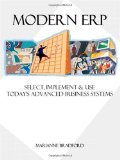Social Networking and ERP
Social Networking has become the mainstay of the internet now. Facebook, Twitter, and the like are all drawing people in and essentially training the next generation of computer users. These social media sites are like magnets that people have to go to each and every day to keep up with their friends and share their updates. People are accessing these media sources from all types of devices. It is all absorbing.

One of the biggest problems in most business applications is user adoption. Getting the users to use the Social Networking and ERP together is a key challenge in many applications. So how does the business applications market combine the social media attraction to a financial or manufacturing system? Combining a social media approach to a business management system would seem to be a logical conclusion. But there are obstacles. You have two different elements playing here. The cold hard facts of transactional data and the emotional connectedness of the social media. How can these gel together?
Salesforce.com has begun a trend in combining social media with a business application through their Chatter application. Essentially, Chatter is a Twitter for Salesforce.com. It is an embedded part of Salesforce.com. Users can post status updates and see all of the updates from their chosen connections (friends). But the power of this application is that you can follow business objects within Salesforce.com such as Accounts, Opportunities, Contracts, etc. So anytime an update occurs on these objects, you get a status update, not from a friend, but rather from an application.
Social Networking and ERP in Action
So how would this likely work in an ERP solution? First you could enhance any alerts to post to a status page. Next you could potentially use it to notify you on any changes to any master record, such as customer, supplier, inventory, or BOMs. The next thing you might consider is to have criteria based alerts be in the form of status updates. Post an update when a customer exceeds their credit limit, or post an alert when a critical inventory part is below its optimal stocking level. Together Social Networking and ERP can have an amazing integration of functionality.
The next logical extension of this would be to extend the ERP to the social web. Imagine getting private posts on Facebook when your major customer falls past due or when your shipment that absolutely must go out notifies you that it shipped on time. When Social Networking and ERP converge, you will have seamless integration between your networks, including Twitter, Facebook, and Linkedin.
Social Networking and ERP in the future
The problem with this whole concept is the ability for traditional client server based ERP solutions to move in this direction. Some of the new systems (or recently re-written) solutions may be able to implement this type of functionality quickly, but some of the older technology solutions may have difficulty bringing a social media function quickly to bear. Social Networking and ERP may only be a thing of dreams, but it can very well be reality faster than you might expect. This integration is clearly something that anyone looking for software should watch for and something we should add to our post on What to look out for when selecting software.
As this is a topic with no clear solution yet, what do you our readers think? Where is this going? When will we see it? Please post your comments and thoughts.
Social Networking and ERP



